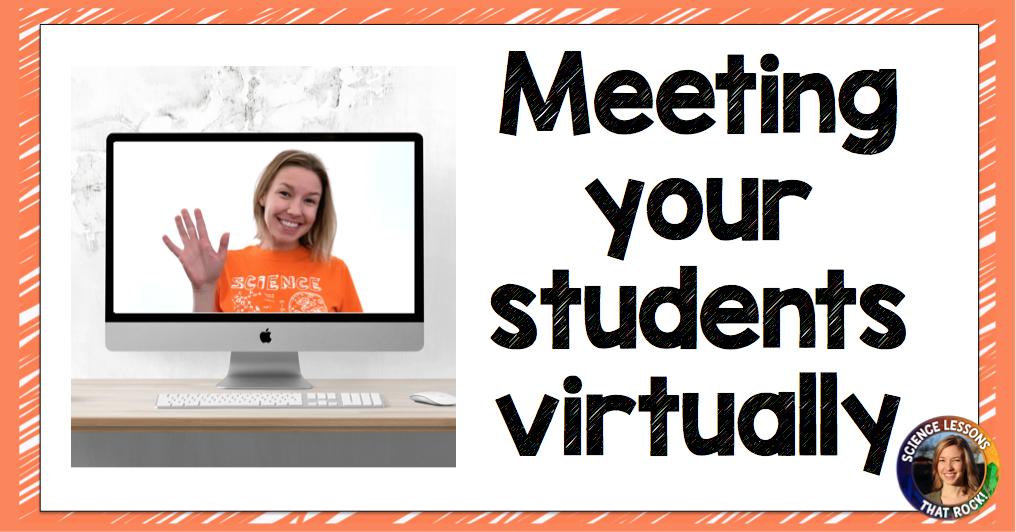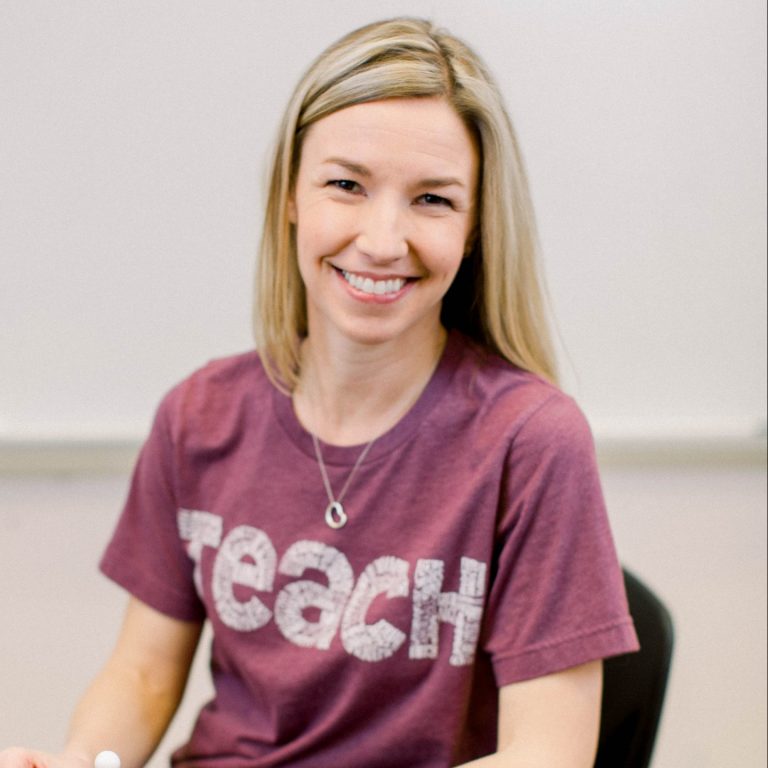But STARTING the school year virtually without those existing relationships will be a different ball game. You will need to take some time the first week to really reach out and try and get to know your students, which won’t be as easy to do through a computer screen. Here are some tips you can try the first week:
1. CREATE A WELCOME VIDEO.
The first thing I would do is post a welcome / about me video on the homepage of your virtual classroom (Canvas, Google Classroom, Microsoft Teams, etc). Could you just post a message you typed out? Sure. But having students see your face and hear your voice is so much more valuable.
Find a fun way to introduce yourself. Since you are at home you have a unique opportunity to introduce yourself in a way you haven’t before. Show them your pets! Show them your favorite hobby you like to do at home. Get creative!
2. LEARN THEIR NAMES.
Learning student names and pronouncing them correctly is one of the first things I worry about during back-to-school season. When you have a new group of students online, you may be tempted to skip over this step. I wouldn’t! I would ask students to send me a 5-10 second video of them introducing themselves and pronouncing their names. Make it the first grade in the grade book so as long as they do it, they start off with an A.
3. HAVE STUDENTS FILL OUT A QUESTIONNAIRE.
Normally during the first week of school I send home a questionnaire that I have students fill out. It asks fun questions like their favorite hobbies and movies, and more pertinent questions like do they have any problems hearing the teacher or seeing the board. I think during COVID a questionnaire is even more important. Kids may be struggling with not having enough food at home, parent unemployment, lack of internet, having to care for siblings, etc. The quicker we can address these issues and relay that information to school support staff the better.
4. TAKE TIME TO REACH OUT TO EACH STUDENT INDIVIDUALLY.
A personal message goes a LONG way. We all know what it’s like to get a card in the mail or a text message from a friend letting them know they were thinking of us. We should do the same for our students.
If you can make a quick phone call home to each student, awesome! Now, if you are a secondary teacher I know you are thinking “but I have 150 students, I don’t have the time for that.” You could instead send each student a message through your virtual learning platform. Heck, you could even copy and paste the same message over and over but change out the name. But taking the time to let students know you want to get to know them, answer any questions, listen to their concerns, and even check in on their home welfare situation is really important.
5. SET UP RELIABLE OFFICE HOURS WHERE THEY CAN CHECK IN WITH YOU.
Everything in life lately feels up in the air. Is it safe to go to stores? When can we go back to school? Are Mom and Dad’s jobs safe? Being a stable figure in their life is something students need. Setting up reliable office hours each week where they KNOW they can reach you is something they will appreciate. Yes, they can still send you messages at midnight, but if they want to speak to you face to face, office hours are great. Provide a reocurring Google Meet or Teams meeting link where students can click to join a meeting and chat with you. It doesn’t have to be every day, for example you can say they can chat every Wednesday from 10-noon or whatever works with your schedule.
6. TRY BREAKOUT GROUPS WHERE THEY CAN MEET WITH YOU AND THEIR PEERS.
Some students won’t feel comfortable meeting with you one-on-one and that’s okay. Try providing them a more comfortable place to chat with you and their peers. Breakout groups are one way you can do that.
Within your online learning platform, you can set up small groups where students can collaborate on assignments and chat with each other. If you use Google Classroom, you can set up Google Meet links. In Microsoft Teams, I would recommend creating different channels within each class. (I’m not familiar with Canvas so I can’t help you with this one… sorry!) Have students join and collaborate on assignments or even eat lunch together virtually (they are really going to miss socializing with their friends!) As the teacher you can pop in to each group meeting, say hi, and provide help if needed.
7. MOST IMPORTANTLY- REPEAT, REPEAT, REPEAT.
After the first week or two it may be tempting to back off the relationship building, get comfortable posting assignments and sitting in bed at night to grade after you get the kids tucked in. I would caution against this for a few reasons. First, we all know relationships are VITAL to student success. Students work hard for teachers they know and trust. Second, school will resume eventually. When you meet them in person you don’t want it to feel like the first day of school all over again. If they already know you and know your expectations, you should be able to transition back to school a lot easier.
The 2020 school year is a going to be a learning curve for us all. What are you nervous about? What do you need help with? Lets chat! Feel free to leave a comment or head to my Facebook or Instagram pages where I have a great following of secondary science teachers who love to engage in these conversations!








